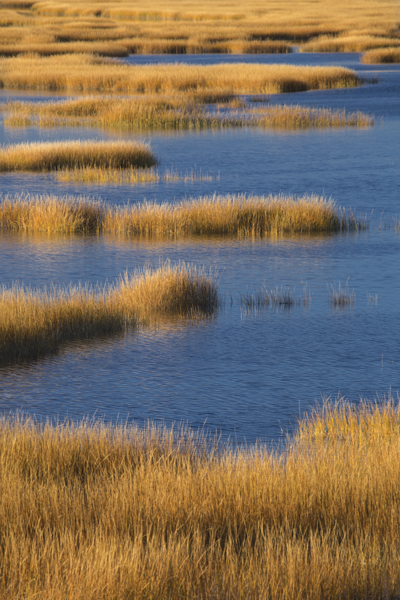by Sue Slotterback
 Everyone knows autumn is the tEdit Postime for change. It’s colorful panoramic views of the forest foliage just before it falls to blanket the ground insulating roots, crowns, seedlings, and many small creatures from winter’s frosty bite. These same changes occur in the salt marsh.
Everyone knows autumn is the tEdit Postime for change. It’s colorful panoramic views of the forest foliage just before it falls to blanket the ground insulating roots, crowns, seedlings, and many small creatures from winter’s frosty bite. These same changes occur in the salt marsh.
It begins in late August. The daylight, or photoperiod wanes. Spartina grasses lose their chlorophyll greens, showing their true hues of yellows-to-oranges as they flower and go to seed. In mid-September poison ivy, Virginia creeper, and winged sumac are the first to turn red signaling, “Here I am!” as they drop their leaves offering up their creamy yellow, navy blue, and wine-colored berries to migrating birds. Later in September the glasswort, or pickleweed shows off its orangey reds and scarlets and its taste turns bitter.
The season wears on; the photoperiod continues to recede. Leafy plants prepare for dormancy and the desiccation of winter’s winds by limiting water circulation to their leaves and stems; the brilliant autumn pigments turn to browns and tans. Deciduous plants drop their leaves for insulation, but the dried leaves and seed head stems of herbaceous plants like grasses and flowers retain their ground.
The tides, wind, snow, and ice batter these dried plant parts. Seeds drop to the ground and are covered in mats of leaves and stems which serve as protection not only for seeds and root crowns, but also for small animals that are hibernating just under the marsh surface or eking out food sources and sheltering from the cold. Waiting….
Winter is here!
